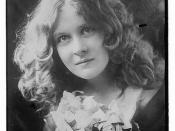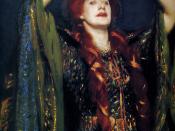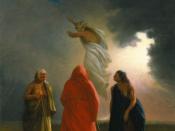Nathan McCoy
Year 10
Ms Esperraga
Oral Presentation - Macbeth
The complex provocation of ideas that occur under the influence of paradoxes is an underlining reason for general contingency throughout any form of literature. In effect, this allows us as the viewers to submerse ourselves in the contents of the story, and connect with these events on a more comprehensive level.
The unsettling paradox in the chanting of the Three Witches, "Fair is foul, and foul is fair," in Act 1 Scene 1 of Shakespeare's play Macbeth sets the underpinning theme of ambiguity and uncertainty for the play. Its unifying function is sustained by Shakespeare on different levels in the play, through techniques such as juxtaposition and irony, inherent to tragedies.
The paradox "Fair is foul, and foul is fair" first appears in the play at the end of Act 1 Scene 1, spoken by the witches in rhyming couplets.
When first read, it seems that the witches insinuate that what appears good is actually evil and what appears evil can be good, implying that noble values of righteousness and beauty are reversed in their perception. The ambiguous nature of moral values and identicalness between fair and foul creates an atmosphere of confusion and thus generates a dramatic tension of suspicion and uneasiness. This dramatic perplexity is sustained by characters throughout the play, such as the moment when Macbeth describes the day in Act 1 Scene 3, through the quote, "So foul and fair a day I have not seen." The day has been fair and foul, for Macbeth is similarly confused in his judgement as he feels the difference is not always obvious. For this reason Shakespeare constructs the play around this ambiguity generated by the paradox, and as the author, sets out to engage...


